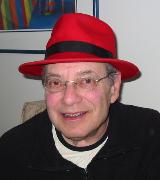| |
Home | About | Mailing Lists | Meetings | Newsletter | FTP | Locate File | |
Please note our meeting location: The IBM offices, at 400 Ellice Ave. (between Edmonton and Kennedy). When you arrive, you will have to sign in at the reception desk, and then wait for someone to take you (in groups) to the meeting room. Please try to arrive by about 7:15pm, so the meeting can start promptly at 7:30pm. Don't be late, or you may not get in. (But don't come too early either, since security may not be there to let you in before 7:15 or so.)
Limited parking is available for free on the street, or in a lot across Ellice from IBM, for $1.00 for the evening. Indoor parking is also available nearby, at Portage Place, for $2.00 for the evening.
And, and a bonus, lets have it do some load balancing as well. After all, no sense having that second machine sitting there doing nothing, right? And all this for less than $3000.00. John Lange was our presenter for this topic, which included a demo of the cluster failover, using the actual production servers! Talk about a feat of derring-do!
Tools used included Linux-HA (for heartbeat and failover support), DRBD (for data replication), openMosix (optional, for load balancing), MySQL and Apache. John's presentation slides are available online, in OO Impress source and PDF formats.
pf firewall to monitor bandwidth usage.
He also showed some Perl code for
getting the usage numbers into a MySQL database,
where they could be used to compute statistics, plot results, etc.

|
Sadly, the same evening, Mel Seder passed away at the age of 60.
Our sympathies are with Mel's family and friends.
Mel had been a MUUG member for several years, and was an enthusiastic
supporter of Linux and Open Source.
That enthusiasm was evident whenever he wore his distinctive red fedora hat,
which also made him easy to spot in a crowd.
We'll miss you, Mel!
Mel's funeral took place at Shaarey Zedek Synagogue, on November 11, 2004. Rabbi Chaya Green presided, and gave a beautiful eulogy. |
John Schulz presented an overview of various RAID (redundant array of independent disks or redundant array of inexpensive disks) solutions he has worked with. The focus was on low to mid end OEM or "build your own" solutions where cost per GB is an important factor. John's presentation notes are available online.
With a smaller crowd than usual, and a generous supply of door prizes this month, everyone who entered the draw walked away with a prize! Gilbert Detillieux provided (as a door prize item) a letter-sized print of a phantogram he produced, which is a special kind of stereoscopic (3D) image. This particular phantogram, called MUUG's Mugs, was done as a kind of tribute to our favourite user group, and featured a collection of old TUUG and MUUG newsletters, coffee mugs, and a paperweight, that had been collected over the group's 18+ years of existence. (The phantogram generated a fair bit of interest, and questions during the round-table session. Gilbert later did a presentation on making these, at the April meeting.)

|
Stereoscopic (3D) photography
is almost as old as photography itself.
However, when working with film and photo-chemical processing,
getting good results was tricky and time-consuming.
Digital cameras and computer-based processing have made the task much easier,
and have also opened up the field to interesting new possibilities.
The phantogram
(technically a
stereoscopic anamorphosis)
is a relatively new form of stereo photograph,
which makes use of the latest image manipulation tools,
but is based on techniques and principles that have been around for centuries.
The results can be quite impressive, and lifelike.
In this presentation, Gilbert Detillieux described some of the principles of stereo photography and phantogram production, as well as demonstrating this using open-source tools such as The GIMP, and freeware such as AnaBuilder (which is Java-based, and platform independent). The presentation also discussed some of the legal issues facing those working in this medium, due to two US patents that have been granted recently, which cover some of the fundamental processes involved. |
Gilbert's presentation notes are available online. Gilbert would also like to thank Dennis Wiens, a stereo photographer from Portage La Prairie, for bringing along samples of his own phantograms, one of his stereo camera rigs, some literature, and enough 3D glasses for everyone present at the meeting!
Bill also showed us a couple of IP phones: the wireless WiSIP and the (Linksys) Sipura 841. (The latter is available in Canada from The Voxilla Store.) Bill used both phones connected via Asterisk, running on both his Linux server at home, and the WRT54G.
Please note our meeting location: The IBM offices, at 400 Ellice Ave. (between Edmonton and Kennedy). When you arrive, you will have to sign in at the reception desk, and then wait for someone to take you (in groups) to the meeting room. Please try to arrive by about 7:15pm, so the meeting can start promptly at 7:30pm. Don't be late, or you may not get in. (But don't come too early either, since security may not be there to let you in before 7:15 or so.)
Limited parking is available for free on the street, or in a lot across Ellice from IBM, for $1.00 for the evening. Indoor parking is also available nearby, at Portage Place, for $2.00 for the evening.